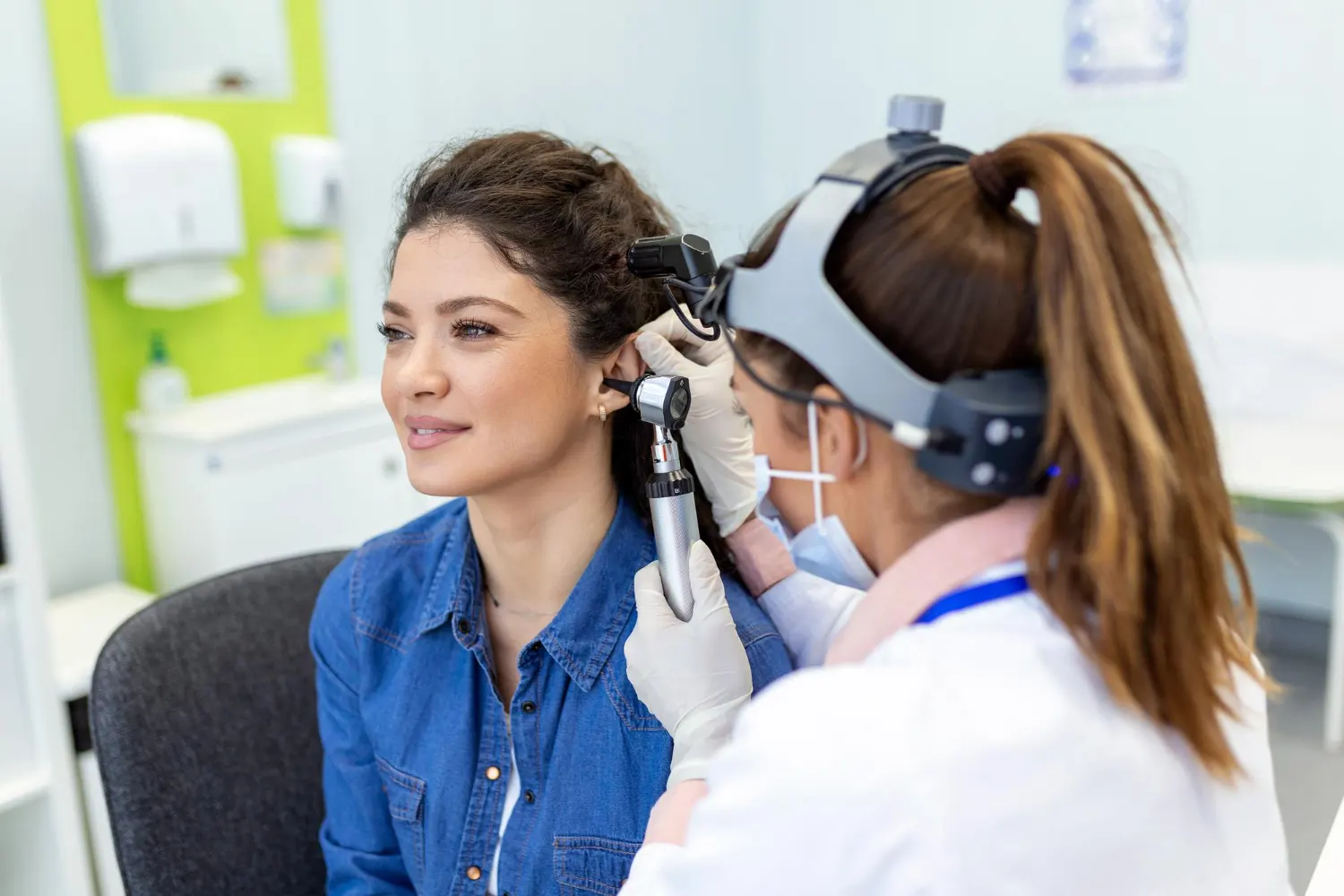Sensory health is a cornerstone of overall well-being, influencing everything from academic performance in children to social engagement in older adults. With millions worldwide affected by visual and auditory impairments, early detection through screening is essential to prevent long-term disabilities. However, when it comes to prioritizing which screening should come first—vision or hearing—the answer is not as simple as selecting one over the other. Instead, the decision should be driven by individual needs, age, and risk factors.
In this comprehensive article, we delve into the intricacies of both vision and hearing screenings, examine the latest research, and offer actionable insights for individuals, families, and healthcare professionals. Our thesis is clear: the prioritization of these screenings should be personalized rather than adopting a one-size-fits-all approach.
In This Article
The Importance of Sensory Screenings
Early detection is a recurring theme in preventive healthcare, and sensory screenings are no exception. Both vision and hearing impairments, if left unchecked, can have cascading effects on cognitive, emotional, and social development. For children, these issues can interfere with language acquisition, academic performance, and social interactions. In adults, particularly older adults, unmanaged sensory loss may contribute to isolation, depression, and a decline in overall quality of life.
Vision screening aims to identify common disorders such as amblyopia (lazy eye), refractive errors, and congenital anomalies. Early detection is particularly critical in children, as the visual system is still developing during the early years of life. Similarly, hearing screening can detect conditions ranging from congenital hearing loss to age-related hearing decline, which, if addressed promptly, can mitigate communication difficulties and enhance life quality.
Evidence-Based Insights into Vision Screening
Overview and Rationale
Vision screening has long been a pillar of pediatric healthcare. Research indicates that early identification of vision problems can significantly improve outcomes through timely interventions. Pediatric vision screenings typically commence soon after birth, with follow-up assessments scheduled at critical developmental milestones. Early identification of issues like amblyopia or strabismus (misalignment of the eyes) can facilitate treatment strategies that may include corrective lenses, patching therapy, or even surgical intervention in more severe cases.
Studies have underscored the impact of untreated visual impairments on educational outcomes. For example, research has linked uncorrected refractive errors in school-aged children to decreased reading proficiency and learning delays. Moreover, professional organizations such as the American Academy of Ophthalmology and the American Academy of Pediatrics recommend regular screenings during well-child visits to ensure that any emerging issues are caught early.
Vision Screening Tools and Guidelines
Screening methods for vision vary by age and developmental stage. Common tools include the Tumbling E chart and the Snellen chart, which are widely used in school settings and pediatric clinics. These tools are simple yet effective in assessing visual acuity and identifying potential deficits. Below is a table summarizing some of the common screening tools and guidelines based on age:
| Age Group | Screening Tool | Key Objectives |
|---|---|---|
| Infants (0-1 year) | Fixation and Tracking Tests | Evaluate early visual attention and fixation abilities |
| Toddlers (1-3 years) | Preferential Looking Techniques | Identify gross visual impairments and asymmetries |
| Preschoolers (3-5 years) | Tumbling E Chart, LEA Symbols | Assess visual acuity; detect amblyopia and refractive errors |
| School-aged (6+ years) | Snellen Chart, LogMAR Charts | Detailed acuity testing; monitor changes over time |
Early and repeated vision screenings are essential because many conditions may develop gradually. As children grow, their visual needs and challenges change, necessitating periodic re-evaluations to capture any emerging problems.
Impact on Daily Functioning
Good vision is vital not only for academic success but also for everyday activities such as reading, driving, and social interactions. Even mild visual impairments can lead to difficulties in these areas, underscoring the importance of regular screenings and prompt treatment. Research has shown that children who receive early interventions for vision problems often experience improved academic performance and self-esteem, which can have lifelong benefits.
Evidence-Based Insights into Hearing Screening
Overview and Rationale
Hearing is fundamental for language development, learning, and communication. In infants and young children, early detection of hearing loss can be critical in preventing speech and language delays. Hearing impairments can be congenital or acquired, and without timely intervention, children may struggle with language acquisition, leading to academic and social challenges later in life.
The primary goal of hearing screening is to detect any loss in auditory function so that interventions—ranging from the use of hearing aids to specialized educational programs—can be implemented promptly. The benefits of early hearing screening extend into adulthood as well. In older adults, addressing hearing loss can enhance quality of life by reducing social isolation and even mitigating cognitive decline.
Hearing Screening Methods and Guidelines
The most commonly used method for hearing screening is pure tone audiometry. This procedure evaluates the softest sound a person can hear at different frequencies and is often used in both clinical and school-based settings. Recently, technological advancements have introduced smartphone-based audiometry, which offers a cost-effective and accessible alternative for remote or underserved areas.
The following table outlines common hearing screening tools and the age groups for which they are typically recommended:
| Age Group | Screening Method | Key Objectives |
|---|---|---|
| Newborns | Otoacoustic Emissions (OAE) Test | Early detection of congenital hearing loss |
| Infants (0-1 year) | Auditory Brainstem Response (ABR) | Confirm initial screening results; assess neural responses |
| Preschoolers (1-5 years) | Behavioral Audiometry | Evaluate hearing through observable behavioral responses |
| School-aged and Adults (6+ years) | Pure Tone Audiometry, Smartphone-based Audiometry | Identify hearing thresholds; monitor age-related decline |
The integration of these screening methods in routine pediatric and adult healthcare settings ensures that hearing impairments are identified at an early stage, allowing for timely interventions that can greatly improve outcomes.
Long-Term Benefits and Challenges
Early hearing intervention can be life-changing. Children who receive treatment for hearing loss typically exhibit significant improvements in language skills, social interactions, and academic performance. For adults, especially those over 50, managing hearing loss can lead to improved cognitive function and overall mental health. However, despite these benefits, challenges such as inconsistent follow-up and limited access to specialized care can impede the effectiveness of hearing screening programs.
Comparing Vision and Hearing Screenings
While both vision and hearing screenings are crucial, their respective urgencies and protocols can differ based on developmental stages and individual risk factors. When comparing these screenings, several factors come into play:
- Developmental Impact:
- Vision: Early visual impairments can directly affect learning, spatial awareness, and reading skills. In children, visual clarity is critical for academic performance and social development.
- Hearing: Auditory inputs are essential for language development. Early hearing loss may delay speech acquisition, leading to potential educational setbacks and social challenges.
- Screening Tools and Methods:
- Vision: Tools such as the Tumbling E chart and Snellen chart are highly effective in early detection, particularly in structured settings like schools and pediatric offices.
- Hearing: Techniques like pure tone audiometry and otoacoustic emissions tests are standard in early childhood; however, emerging technologies are enhancing accessibility, especially for remote communities.
- Risk Factors:
- Vision: Family history of ocular diseases, premature birth, and specific genetic conditions increase the risk of vision problems.
- Hearing: Risk factors for hearing loss include premature birth, infections (such as meningitis), and genetic predispositions. Additionally, occupational and environmental exposures can lead to hearing impairments in adults.
- Follow-Up and Intervention:
- Vision: Early intervention for vision issues often involves corrective lenses, patching, or surgical procedures, with proven success in improving long-term outcomes.
- Hearing: Interventions may range from hearing aids to cochlear implants and specialized therapy programs. However, the challenge often lies in ensuring consistent follow-up, especially in resource-limited settings.
The table below provides a side-by-side comparison of the key aspects of vision and hearing screenings:
| Aspect | Vision Screening | Hearing Screening |
|---|---|---|
| Primary Objective | Detect and correct visual impairments early to support learning and daily activities | Identify hearing deficits to facilitate timely intervention and language development |
| Common Tools | Tumbling E chart, Snellen chart, LEA Symbols | Pure tone audiometry, Otoacoustic Emissions (OAE), Auditory Brainstem Response (ABR) |
| Age-Specific Guidelines | Frequent screenings from infancy through adolescence | Immediate screening at birth with follow-up during early childhood and periodic reassessment for adults |
| Risk Factors | Prematurity, family history of ocular diseases, congenital anomalies | Congenital infections, premature birth, genetic factors, environmental exposures |
| Intervention Strategies | Corrective lenses, patching, surgical procedures | Hearing aids, cochlear implants, auditory training programs |
Prioritizing Screenings Based on Age and Individual Needs
There is no universal answer to whether vision or hearing screening should come first. Instead, the approach must be tailored to the individual’s unique circumstances, including age, medical history, and potential risk factors.
Pediatric Considerations
For infants and young children, both vision and hearing screenings are integral to early development. However, the emphasis may shift depending on the child’s immediate needs. Newborns typically undergo hearing screening as part of standard postnatal care because early auditory input is critical for language development. Meanwhile, vision screening, although initiated early, may be scheduled more frequently during preschool and early school years when visual tasks become more demanding.
In practice, healthcare providers may recommend that infants first receive a hearing screening shortly after birth using Otoacoustic Emissions (OAE) tests. As children grow, vision assessments using behavioral techniques and visual acuity charts are introduced, ensuring that any emerging issues are promptly addressed. Tailoring these screenings based on developmental milestones and family history helps create an individualized plan that best supports the child’s overall growth.
Adult and Geriatric Considerations
For adults, especially those over the age of 50, the decision regarding which screening to prioritize may depend on lifestyle, occupational hazards, and existing health conditions. Vision problems such as cataracts, glaucoma, and age-related macular degeneration are common in older adults, making regular eye exams critical. Conversely, hearing loss—often gradual and insidious—can significantly impact communication and social interactions if not addressed.
Older adults may benefit from integrated screening programs that assess both vision and hearing simultaneously. In this population, a combined approach not only facilitates early detection but also allows healthcare providers to monitor the interplay between sensory impairments and overall cognitive health. A personalized plan, one that takes into account the individual’s medical history and lifestyle factors, can lead to more effective interventions.
Integrating Screenings into a Comprehensive Health Plan
Collaborative Approaches and Best Practices
Healthcare systems worldwide are recognizing the importance of integrating vision and hearing screenings into routine health check-ups. Collaborative approaches involving pediatricians, ophthalmologists, and audiologists can help ensure that patients receive comprehensive care. When screening data from both vision and hearing assessments are combined, practitioners can better understand how sensory impairments may be interrelated and address them holistically.
For example, in some community health programs, mobile clinics are equipped to perform both types of screenings in one visit. This not only increases accessibility for underserved populations but also reduces the burden on families who might otherwise have to schedule multiple appointments. Collaborative practices like these serve as a model for preventive healthcare, emphasizing the value of an individualized approach.
Leveraging Technology
Advances in technology are transforming the landscape of sensory screenings. Smartphone-based audiometry and digital vision screening tools are becoming increasingly popular due to their ease of use, portability, and cost-effectiveness. These innovations are particularly beneficial in remote or resource-limited areas, where access to traditional screening facilities may be challenging. By integrating technology with conventional methods, healthcare providers can offer more frequent and accurate assessments, ultimately improving early detection rates.
Practical Advice for Patients and Families
Given the complexities involved in choosing between vision and hearing screenings, patients and families are encouraged to adopt a proactive and informed approach:
- Discuss Risk Factors: Engage with healthcare professionals about your family’s medical history and any risk factors that may predispose you to sensory impairments. This conversation can help tailor a screening schedule that aligns with your individual needs.
- Stay Informed About Guidelines: Regularly review updates from reputable organizations such as the American Academy of Ophthalmology and the American Speech-Language-Hearing Association to understand current screening recommendations.
- Embrace Integrated Care: If possible, seek out clinics or programs that offer combined sensory screenings. This integrated approach can streamline the process and provide a more comprehensive view of your sensory health.
- Plan for Regular Follow-Ups: Both vision and hearing conditions can evolve over time. Scheduling regular follow-up visits ensures that any changes in your sensory health are monitored and managed effectively.
For families with young children, ensuring that both vision and hearing screenings are part of the routine pediatric care schedule can make a significant difference in long-term developmental outcomes. In adults, particularly those in later life, combining these screenings with other health assessments can provide valuable insights into overall wellness.
Special Considerations in Diverse Settings
Low-Resource and Rural Communities
In low-resource settings and rural areas, access to specialized healthcare can be limited. In such contexts, community-based screening programs led by trained community health workers (CHWs) have proven to be effective. CHWs can perform preliminary screenings using portable equipment and refer individuals to specialist services when necessary. By increasing the frequency and accessibility of screenings, these programs play a crucial role in mitigating the long-term impacts of undiagnosed sensory impairments.
Educational and Occupational Settings
In schools, regular vision and hearing screenings are not only part of health programs but also critical to ensuring that students can perform at their best academically. Similarly, workplaces, especially those in industries with high noise levels or visual demands, benefit from regular sensory assessments. Employers who prioritize sensory health can reduce the risk of accidents and enhance employee well-being and productivity.
Future Directions and Research Opportunities
The field of sensory screening is continuously evolving, driven by ongoing research and technological innovation. Emerging studies are examining the long-term outcomes of integrated screening programs and the cost-effectiveness of mobile screening units. Future research may also explore genetic markers and other predictive factors that could further personalize screening protocols.
In addition, collaboration across international borders is expanding the scope of best practices. Global health organizations are working to standardize screening guidelines and improve access to care in underserved populations. As data accumulates, healthcare providers will be better equipped to make evidence-based decisions regarding the prioritization of vision versus hearing screenings.
Conclusion
In summary, both vision and hearing screenings play pivotal roles in ensuring optimal sensory health across the lifespan. While the debate over which screening should come first might seem to invite a binary choice, the evidence strongly supports a personalized approach. For infants and young children, early hearing screening is often prioritized due to its critical role in language development, while vision screenings gain importance as children begin formal education. In adults, particularly those over 50, an integrated approach that addresses both sensory functions is essential to maintaining quality of life.
The decision on whether to prioritize vision or hearing screening should be informed by individual risk factors, developmental stages, and lifestyle considerations. By adopting an individualized plan, healthcare providers and patients can work together to ensure that both vision and hearing impairments are detected and managed early, thereby reducing long-term complications and enhancing overall well-being.
Ultimately, rather than asking which screening should come first, the focus should be on establishing a comprehensive, regular screening regimen that adapts to the changing needs of the individual. Through collaboration, technological innovation, and adherence to evidence-based guidelines, we can better safeguard sensory health and promote a higher quality of life for people of all ages.
References
American Academy of Ophthalmology. (2023). Guidelines for pediatric vision screening. Retrieved from https://www.aao.org/education/clinical-statement/vision-screening-infants-children-2022
American Speech-Language-Hearing Association. (2022). Early detection and intervention for hearing loss in children. Retrieved from https://www.asha.org/public/hearing/screening/
Centers for Disease Control and Prevention. (2021). Hearing screening in newborns and children: Guidelines and best practices. Retrieved from https://www.cdc.gov/ncbddd/hearingloss/early-detection.html
World Health Organization. (2020). Global estimates on visual and hearing impairment. Retrieved from https://www.who.int/publications/i/item/9789240082458
Frontiers in Public Health. (2023). Combined hearing and vision screening programs: A scoping review. Frontiers in Public Health, 11, 1119851. https://doi.org/10.3389/fpubh.2023.1119851









0 Comments